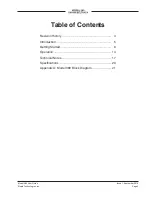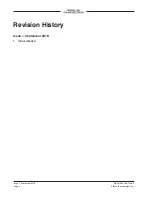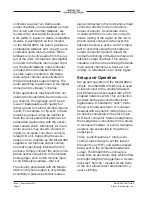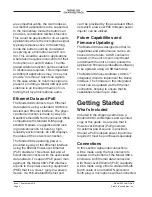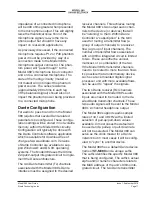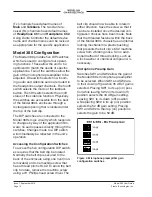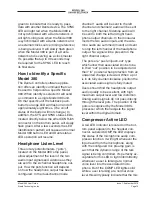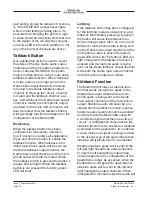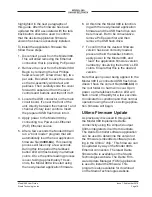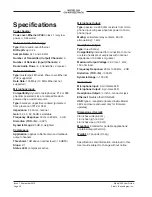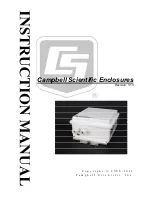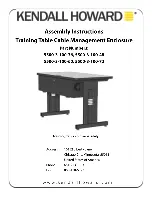
Model 380 User Guide
Issue 1, September 2016
Studio Technologies, Inc.
Page 7
Dante Audio-over-Ethernet
Audio data is sent to and received from
the Model 380 using the Dante audio-over-
Ethernet media networking technology. As
a Dante-compliant device, the Model 380’s
two output (Dante transmitter) and two
input (Dante receiver) audio channels
can be assigned to other devices (routed)
using the Dante Controller software appli-
cation. The Dante transmitter and receiver
channels are limited to supporting four
Dante flows, two in each direction. The
digital audio’s bit depth is up to 24 with
a sampling rate of 44.1 or 48 kHz. Two
bi-color LEDs provide an indication of
the Dante connection status.
Audio Quality
The Model 380’s performance is com-
pletely “pro” with capabilities not expected
in something of such diminutive propor-
tions. A low-noise, wide dynamic-range
microphone preamplifier and associated
voltage-controller-amplifier (VCA) dynamics
controller (compressor) ensures that mic
input audio quality is preserved while
minimizing the chance of signal overload.
The output of the microphone preamp
and compressor is routed to an analog-to-
digital conversion (ADC) section that sup-
ports sampling rates of 44.1 and 48 kHz
with a bit depth of up to 24. The audio
signal, now in the digital domain, routes
through the processor and on to the Dante
interface section where it is packetized and
prepared for transport over Ethernet.
Audio input signals arrive via the Dante
receiver channels and pass into the Model
380’s processor. The sampling rate will be
44.1 or 48 kHz with a bit depth of up to 24.
Channel routing, headphone level control,
and sidetone creation are performed within
the digital domain. This provides flexibil-
ity, allows precise control, and keeps the
three level potentiometers (two for audio
inputs and one for sidetone) from having
to directly handle analog audio signals.
The two audio channels destined for
the phones outputs are sent to a high-
performance digital-to-analog converter
and then on to robust driver circuitry. High
signal levels can be provided to a variety
of headsets, headphones, and earpieces.
Configuration Flexibility
Several configuration choices are avail-
able, allowing the Model 380 to meet the
needs of specific applications and user
preferences. Five DIP switches, located
under the belt clip, facilitate selection of
key parameters including microphone
preamplifier gain, audio routing to the
headphone output, talkback button mode,
and sidetone operation. Two of the DIP
switches are used to select the gain of
the microphone preamplifier from among
four choices. This allows the Model 380
to match the output sensitivity of a range
of handheld and headset-associated
microphones. In the dual-channel mode
the two input audio sources will be routed
independently to the left and right head-
phone output channels while sidetone will
be sent to both left and right. In the mono
mode the two input audio sources, along
with sidetone, will be combined and sent
to only the left headphone output chan-
nel. These choices allow support for a
dual-channel (two independent channels
of talent cueing (IFB)) or a single-channel
monaural listening experience.
The pushbutton switch, located on the
Model 380’s top panel, can be configured
to operate in either a momentary or latch-
ing mode. While the functional differences
Содержание M380
Страница 2: ...This page intentionally left blank...



